When it arrived less than three years ago, the current generation of the Toyota Camry Hybrid was the first mid-size sedan ever rated by the EPA at more than 50 mpg combined. Now it’s up for some healthy competition in the form of the 2020 Hyundai Sonata Hybrid Blue, which matches the most-efficient Camry LE’s 52 mpg EPA combined rating and sets a new sedan record of 54 mpg highway.
Right off our recent first drive of the 2020 Hyundai Sonata Hybrid—in top Limited form—I jumped behind the wheel of a 2020 Toyota Camry Hybrid XLE for a few days, primarily to get a baseline of how these two models match up in mileage, but also to compare and contrast these two fuel sippers.
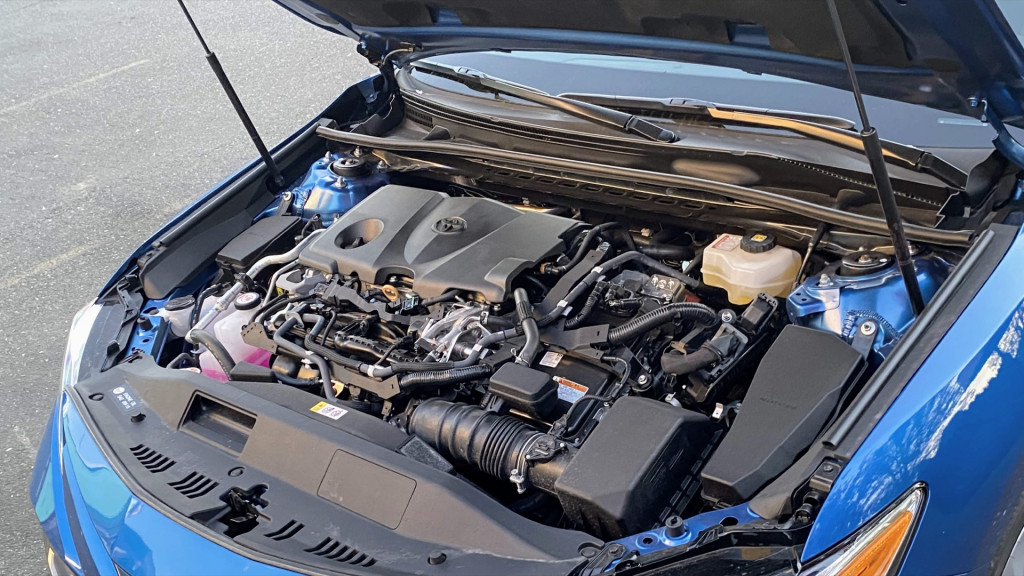
2020 Toyota Camry Hybrid XLE - Driven - Portland OR, April 2020
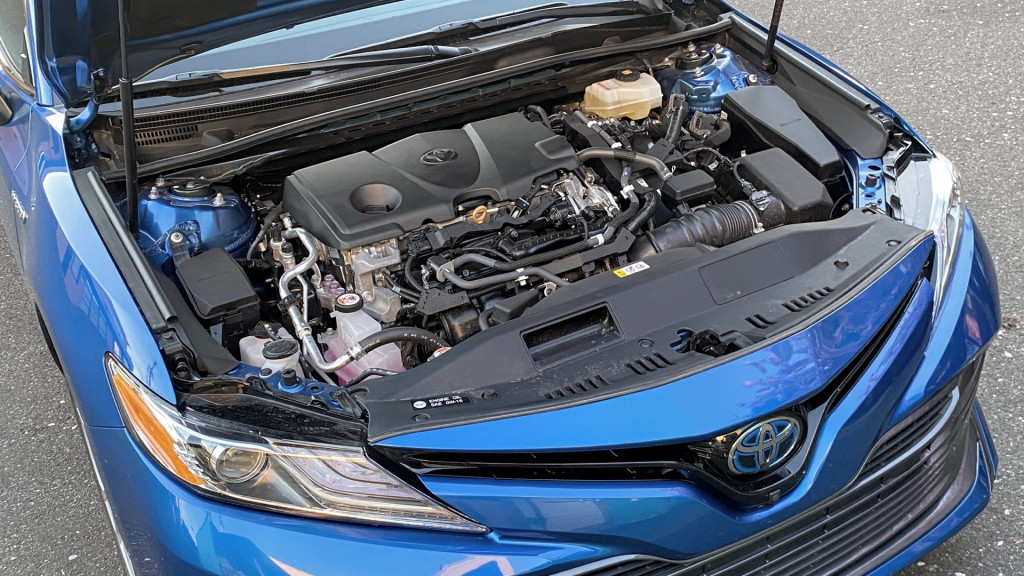
2020 Toyota Camry Hybrid XLE - Driven - Portland OR, April 2020

2020 Toyota Camry Hybrid XLE - Driven - Portland OR, April 2020
The Camry Hybrid has a 176-horsepower, 2.5-liter Atkinson-cycle inline-4 with a pair of electric motors that make 118 hp. Altogether the powertrain makes 206 hp that it sends through a planetary gear system. The software controls managing it all reflect nearly 25 years of ongoing refinement.

2020 Hyundai Sonata Hybrid - First Drve - Portland OR, April 2020
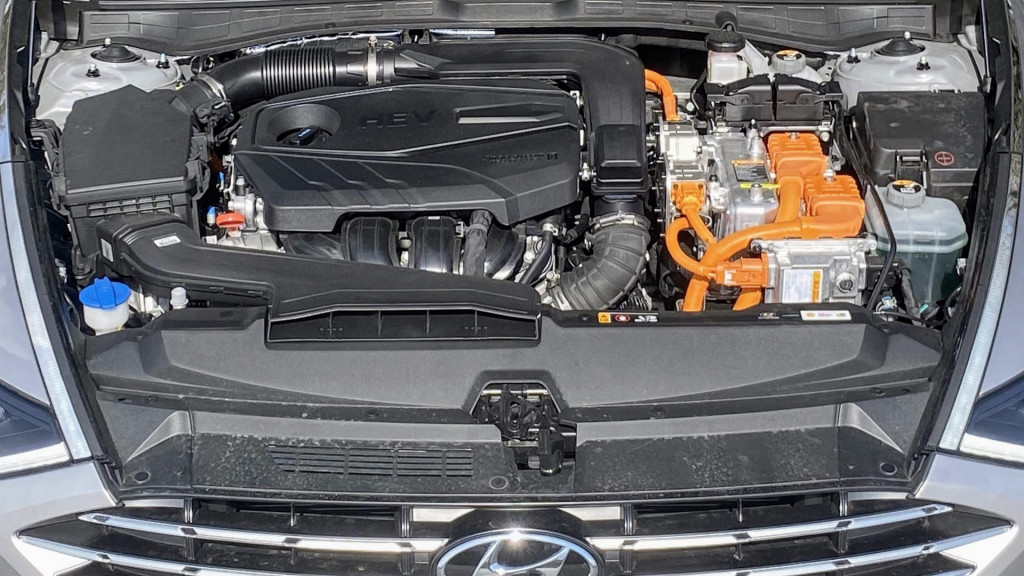
2020 Hyundai Sonata Hybrid - First Drve - Portland OR, April 2020
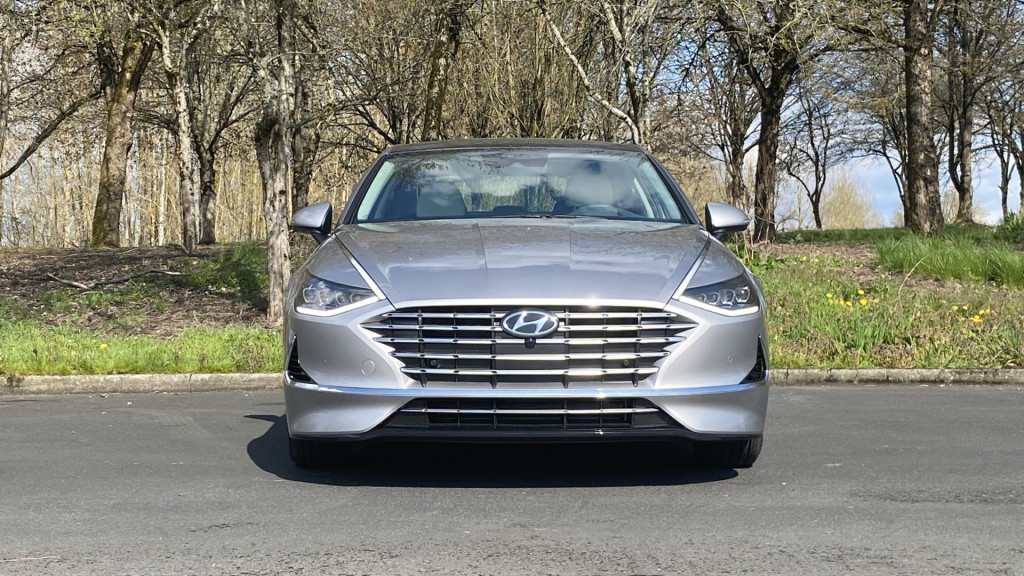
2020 Hyundai Sonata Hybrid - First Drve - Portland OR, April 2020
The Sonata Hybrid's 2.0-liter inline-4 makes 150 hp, and a 51-hp motor is packaged with a more conventional 6-speed automatic and a clutch pack to take the engine in and out of the mix. Its combined output is 192 hp. Hyundai's system has new Active Shift Control tech that turns the motor into more of a precise, active player in the transmission’s shifts and power-flow changes.
The cars are closely aligned in battery size. The Toyota Camry Hybrid LE and the entire Hyundai Sonata Hybrid lineup use lithium-ion hybrid batteries, while the Camry Hybrid SE and XLE use a nickel-metal-hydride battery. Battery capacity is close—1.62 kwh for the Sonata vs. 1.6 kwh for the Camry.
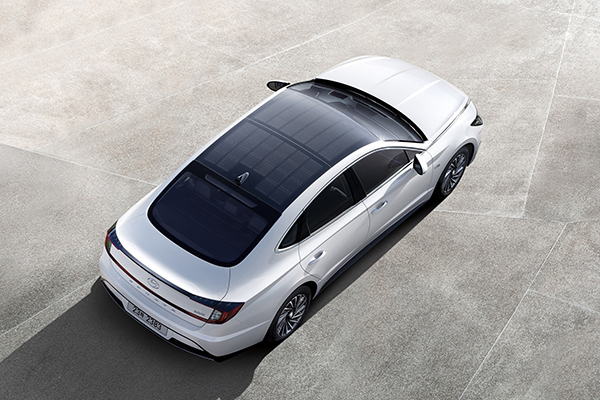
2020 Hyundai Sonata Hybrid
One feature that the Camry Hybrid doesn’t offer is a rival for the Sonata Hybrid’s Solar Roof System.
The top-level Camry Hybrid XLE I drove cost $39,766 and included a Driver Assist Package (color head-up display, ventilated front seats, rear cross-traffic system), adaptive LED headlights, a moonroof, and the navigation package with JBL premium audio. Sonata Hybrid pricing hasn’t been released yet, but the top-level Limited tested, with blind-spot monitoring, wireless phone charging, a digital key system, and a heated steering wheel, likely adds up to less than $35,000.
Which gets the better gas mileage?
For green car enthusiasts, the question of efficiency is paramount. So, which of these cars gets better mileage?
The Camry Hybrid XLE carries EPA ratings of 44 mpg city, 47 highway, and 46 combined. Like the Sonata Hybrid Limited I’d driven earlier the same week—carrying ratings of 45 mpg city, 51 highway, 47 combined—it was the heavier, better-equipped version in the lineup.
The extra features mean these aren't the mileage champs in each lineup. The 2020 Camry Hybrid LE earns ratings of 51 mpg city, 53 highway, and 52 combined in its simplest LE form, and the Sonata Hybrid rates 50 mpg city, 54 highway, 52 combined in its eco-focused Blue version.

2020 Toyota Camry Hybrid XLE - Driven - Portland OR, April 2020

2020 Toyota Camry Hybrid XLE - Driven - Portland OR, April 2020
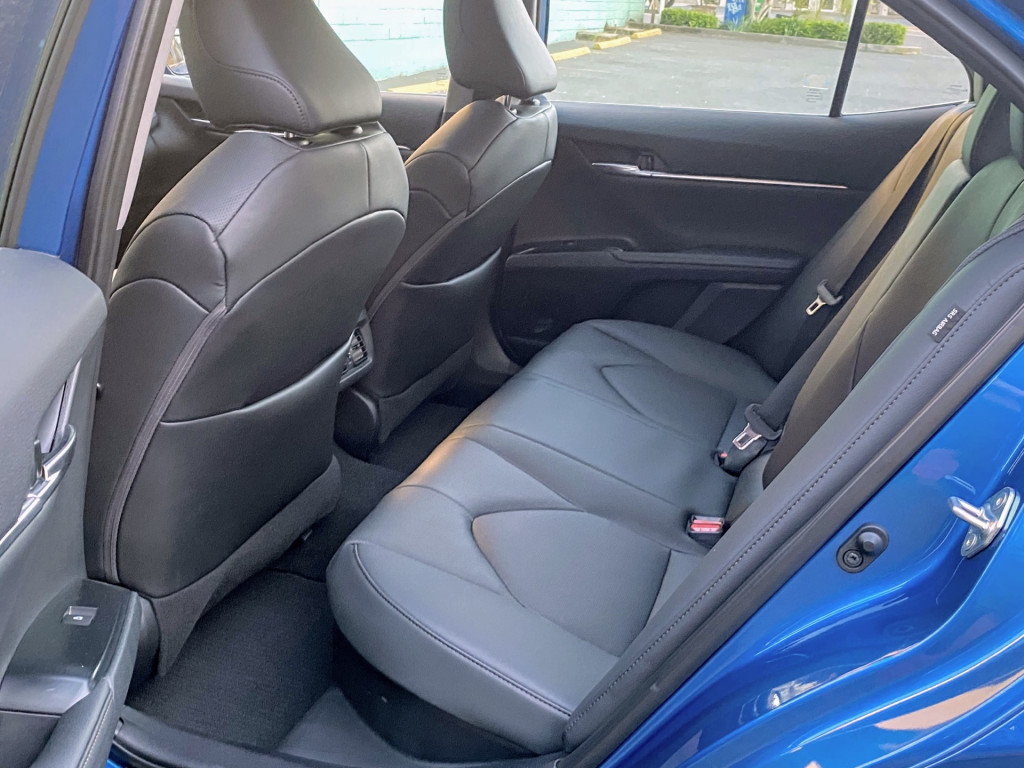
2020 Toyota Camry Hybrid XLE - Driven - Portland OR, April 2020
The competition heated up on my 53-mile round trip route that includes 700 feet of elevation change and a near-equal mix of under-65-mph freeways, suburban boulevards, and semi-rural rolling-hill backroads. There, I averaged 50 mpg in the Camry Hybrid versus the Sonata Hybrid’s 56 mpg.
In that loop I noticed a very different behavior pattern between the two hybrids. The system in the Camry revved the gas engine more on each short uphill run to maintain speed, whether I used cruise control or simply maintained gentle throttle application. On the same road, the hybrid system in the Sonata Hybrid lugged the engine along in a higher gear on uphills while applying electric boost, but it didn't shut the enigne off as frequently.
Two urban-driving loops of about 20 miles each returned a trip-computer average of 41 mpg in the Camry and 40 mpg in the Sonata. In similar city-driving loops, the Sonata Hybrid had returned between 36 and 38 mpg on two comparable (but not the same) loops.
These experiences revealed the following strengths and weaknesses:
- The Camry Hybrid does a lot better in highway driving than most other Toyota hybrids
- The Sonata Hybrid will likely return higher mpg in varied, faster-flowing American commute conditions
- Stop-and-go urban driving is the Camry Hybrid’s strength

2020 Toyota Camry Hybrid XLE - Driven - Portland OR, April 2020

2020 Toyota Camry Hybrid XLE - Driven - Portland OR, April 2020

2020 Toyota Camry Hybrid XLE - Driven - Portland OR, April 2020

2020 Toyota Camry Hybrid XLE - Driven - Portland OR, April 2020
Here are a few more impressions, along with thoughts on which car should win your attention:
Steering and handling. Considering the norm for front-wheel-drive midsize sedans, neither of these are precise-feeling, capable-handling sedans. The Sonata’s steering centers better and feels more relaxed on the open road, but the Camry feels more willing to be whipped around tight corners and more communicative when its suspension is loading up midcorner. I’d give the Camry Hybrid an edge in handling over the Sonata Hybrid mainly because its hybrid system also seems much more able to flip roles quickly (in its Sport mode) and keep the car’s motions fluid.
Interface and tech. Without getting into Apple CarPlay, the interface in the Camry Hybrid looked primitive compared to the glossy new wide-screen system in the Sonata Hybrid. In terms of functionality, the system in the Toyota addresses nearly all the quibbles I'd had with the Hyundai system—like the fussy capacitive buttons surrounding the screen. In the Toyota, the volume knob and tuning knob are both a quick reach away from the steering-wheel rim, and they’re different sizes, so you don’t have to take your eyes off the road for long. That said, once I got comfortable with the Hyundai system, I liked it better; its displays were clearer, and the menus made more sense.
2020 Toyota Camry TRD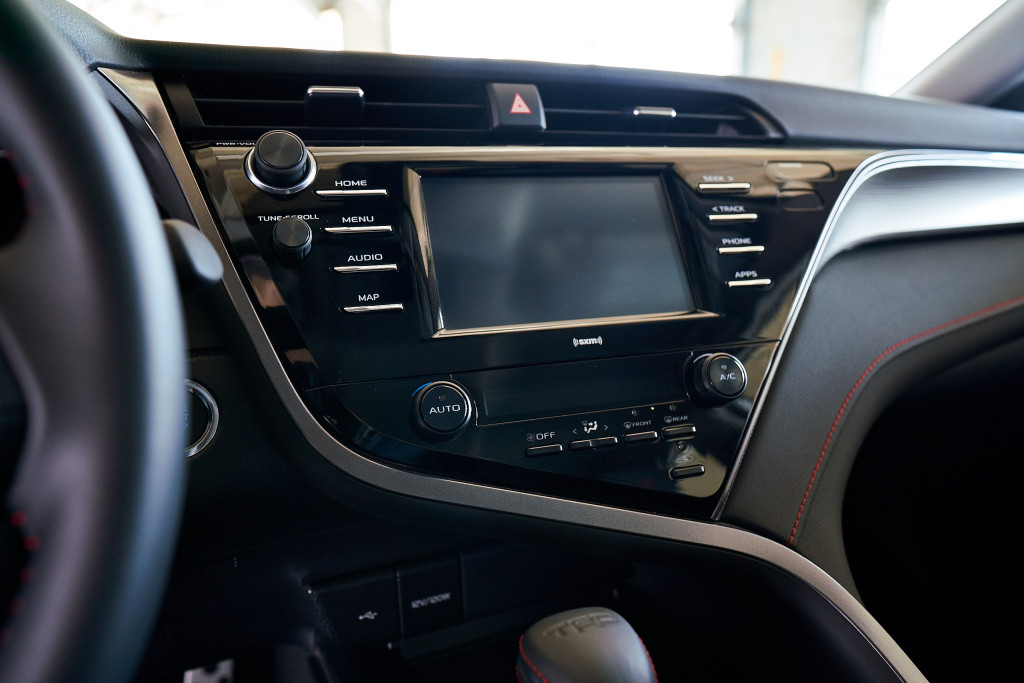
Comfort and quiet. No need to get out the decibel meter here; the difference is dramatic. The Sonata Hybrid far quieter inside. Getting into the Camry Hybrid after the Hyundai felt like stepping down from a luxury car to a mainstream brand in terms of noise and vibration. While I could hear the engine somewhat more than in the Sonata Hybrid, the most dramatic difference was over coarse pavement surfaces at highway speeds; what was a distant whoosh in the Sonata Hybrid was a mid-level din in the Camry Hybrid.
Puzzling over the package. Heading from the Sonata into the Camry, the Camry felt light and airy. Although the Sonata’s design is swoopy and more rakish, you gain more of a “greenhouse” in the Camry, including better outward visibility. The rear seat was unexpectedly harder to get into in the Camry. Trunk space in both of these models is huge—increased this year in the Sonata Hybrid by moving the batteries under the back seat from the trunk.

2020 Toyota Camry Hybrid XLE - Driven - Portland OR, April 2020

2020 Toyota Camry Hybrid XLE - Driven - Portland OR, April 2020

2020 Hyundai Sonata Hybrid - First Drve - Portland OR, April 2020
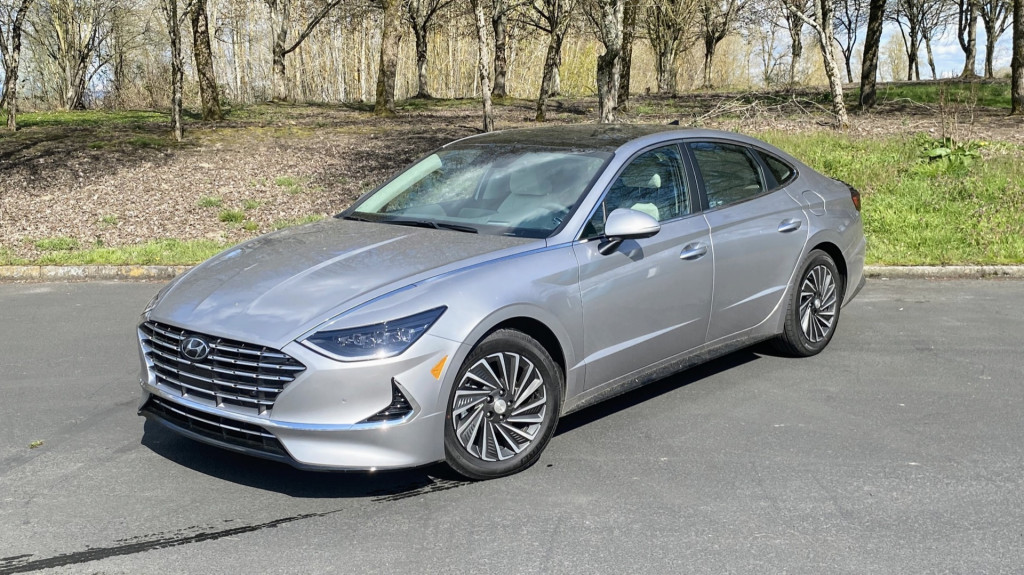
2020 Hyundai Sonata Hybrid - First Drve - Portland OR, April 2020
So which of these two high-mileage sedans should you pick? Based on my drives, it comes down to personal priorities. If comfort, refinement, and aesthetic details are top priorities—or if you commute on sluggish freeways—then the Sonata Hybrid is a step above. But if it’s all stop-and-go, and you like the track record of Toyota hybrids, the Camry Hybrid is the efficient super-sedan.
